Violin bows
I have various models on offer. First come the earliest - ca. 61 cm short, very light (around 30 grams!!), made from various indigenous woods, all with a clip-in frog and black hair (white available on request). These are incredibly sprightly bows, very articulate, ideal for the earliest Italian and German repertoire. For more information see the Background.
Here are a few pictures of such bows with different woods:
Cherry, with a boxwood frog (31.7 grams, 61 cm):

Beech, with an ebony frog (30.3 grams, 61.5 cm):

Plum, with an boxwood frog (32.4 grams, 61 cm):


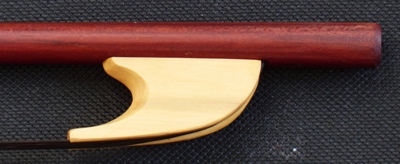
Yew, with an ebony frog (28.5 grams, 62 cm):



This bow is also available in pear (or Elsbeer), and maple, each with its own characteristic sound and feel.
I make essentially the same bow - 61 cm, with a clip-in frog in snakewood - still articulate and very lively, but somewhat heavier, which lends a certain density and focus to the sound (37.9 grams, 61 cm):


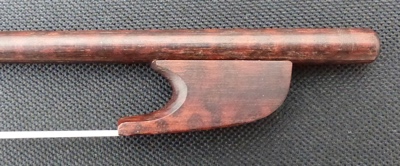
And then come the so-called “Sonata” bows - same design, just a little bit longer (this from Talbot's Manuscript - again see the Background for details.) . Here are some examples:
Cherry (36.8 grams, 66 cm):



Snakewood, also 66cm, weighing 42.4 grams:


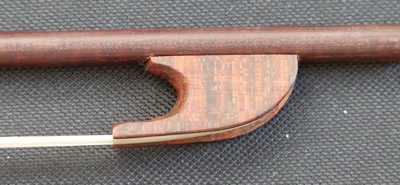
There are a pair of (nearly identical) original bows in the Salzburg Museum - known as the ‘Biber bows ’, pretty much just because they were found in Salzburg. Any putative connection with Biber is pretty tenuous - we don't even know when they were made. That said, the incredibly filigran stick just behind the point lends this model a particularly lovely feel and sound. I make version of this bow in snakewood:





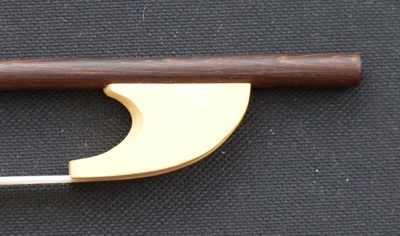
As discussed in my background page, a portrait of Corelli has recently come to light, with a rather nice portrayal of his bow. In the absence of any actual bows that we can reliably date to Corelli's time, I offer this 'embodiment' of a 'Corelli' bow:


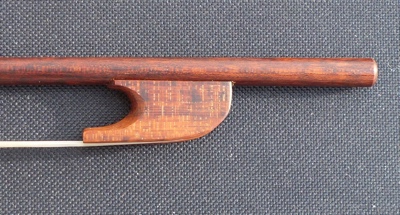
Moving a little forward in time to around the middle of the 18th century, we come to slightly longer heavier bows. Here I have something which I call a "Bach" bow - not because I know that Bach or his contemporaries would have used this model, but because it looks possible, judging from the few (undatable, possibly mid-18th century) surviving bows, and (sadly also only a few) paintings from around this time. And it works well for Bach and his contemporaries
Here is an example, made of snakewood. It is 70cm long, and weighs 45 grams.



In the "Conservatorio Tartini" in Trieste there are two bows which we have good reason to believe belonged to, and were played by Tartini. They are both fixed frog bows, one approaching classical, made of Pernambuco, and the other an earlier baroque model, of snakewood. The stick is octagonal, and incredibly thin towards the tip. Nonetheless, the bow has surprising strength, seems easy to play and is very direct. This version pictured here is made of ironwood, 73cm long (just like the original) and weighs 43 grams.


